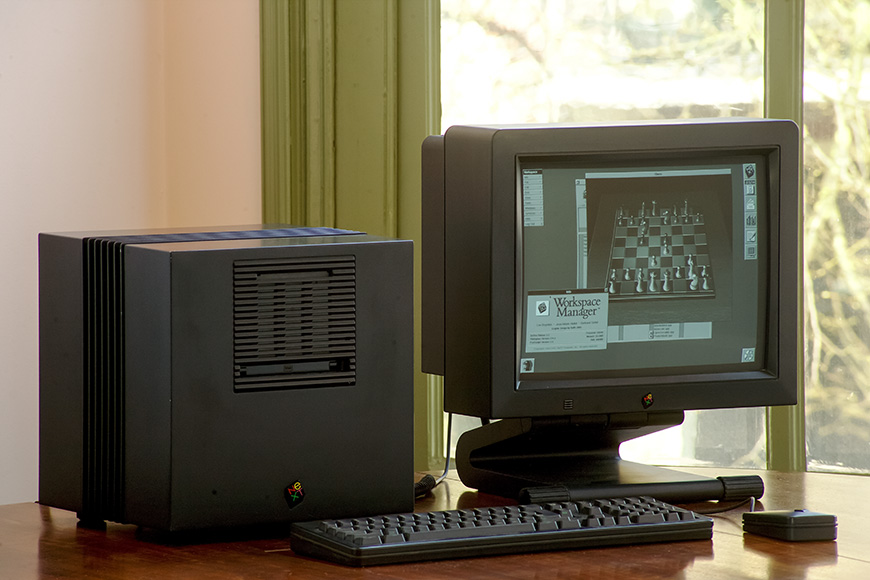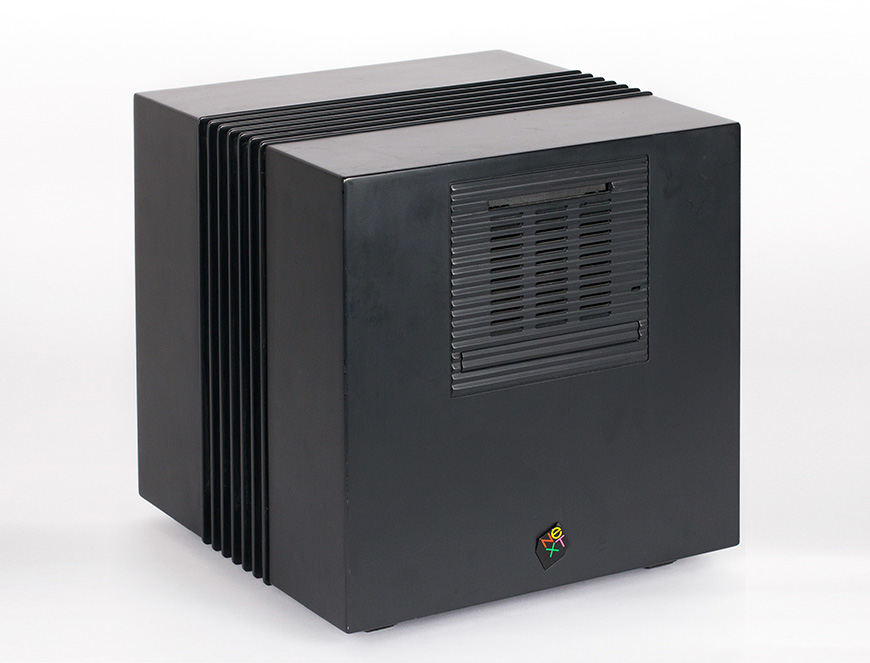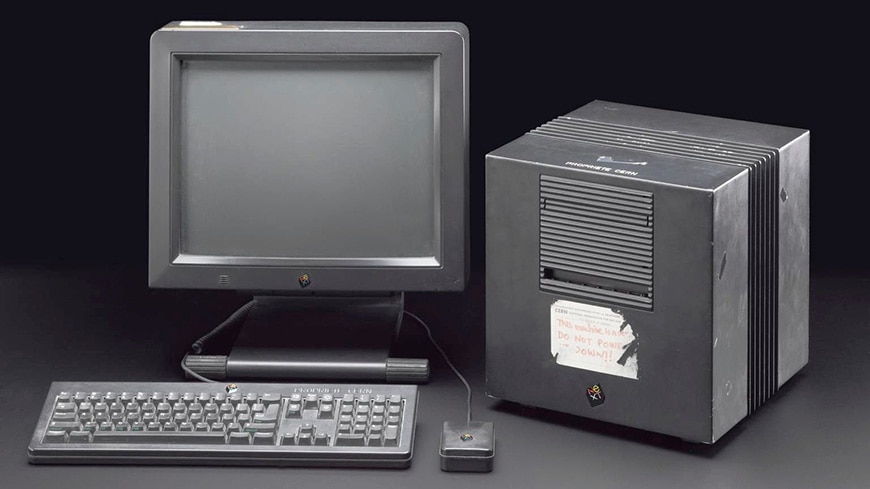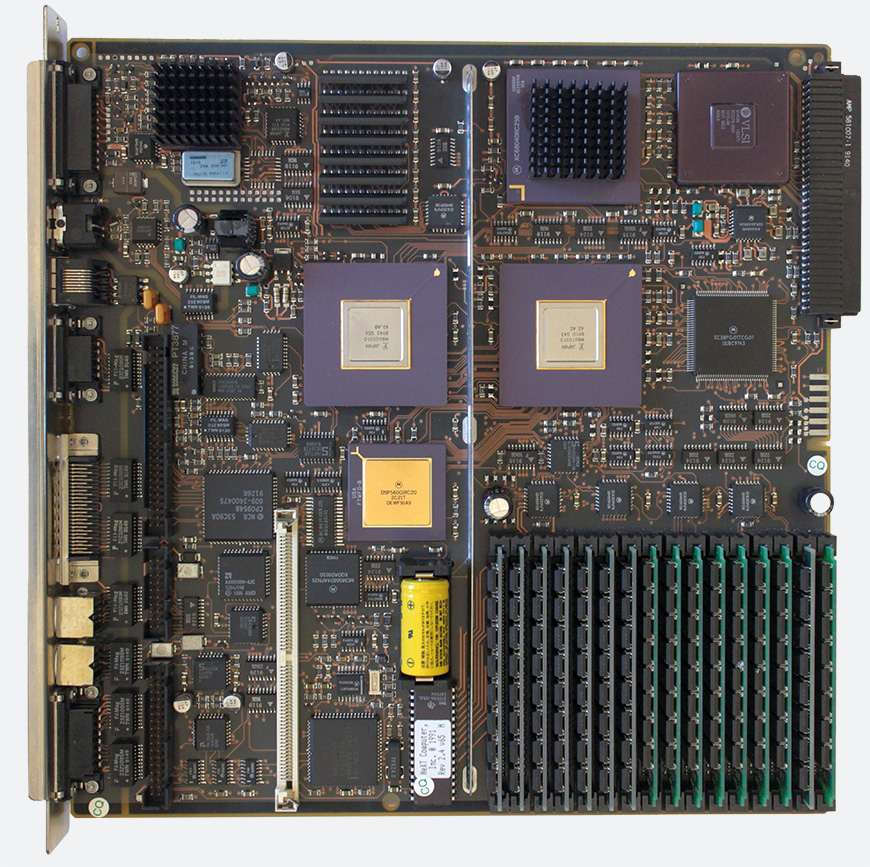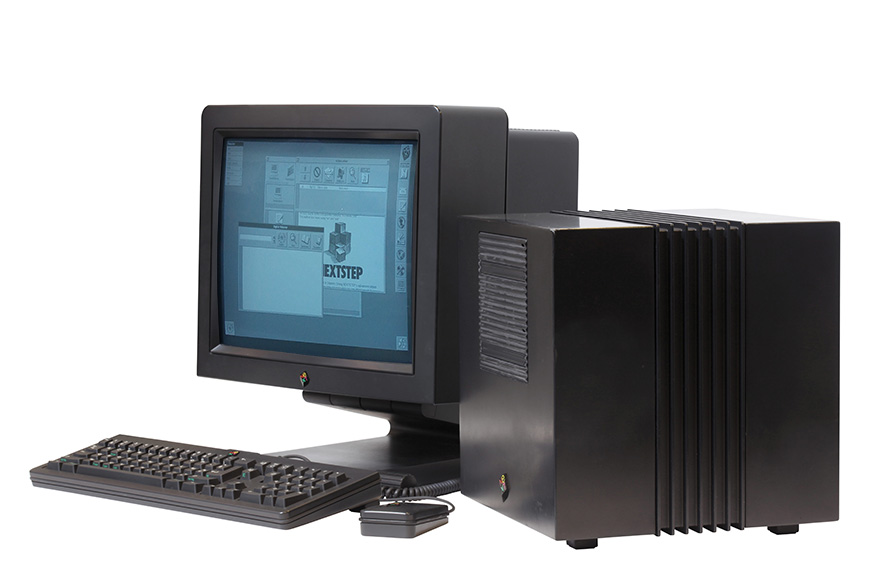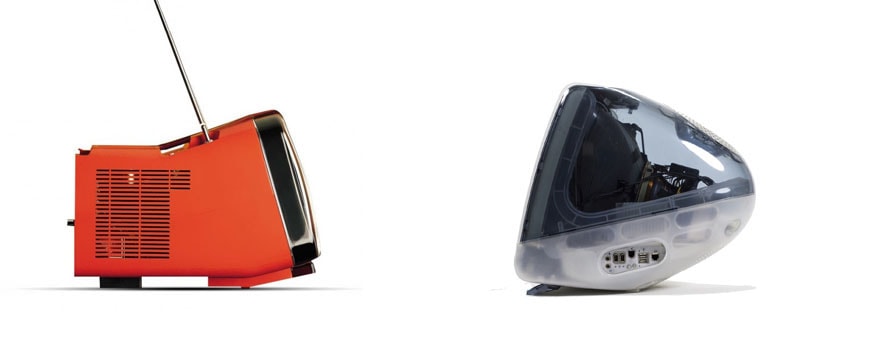History and Design of the NeXTcube (1988-1995)
A NeXTcube with keyboard, mouse, and a 17” MegaPixel Display monitor; photo Simon Claessen via Flickr (CC BY-SA 2.0).
History and Design of the NeXTcube (1988-1995)
The NeXTcube was a workstation manufactured between 1988 and 1995 by NeXT, the company founded by Steve Jobs after leaving Apple in 1985, also famous for its iconic cube-shaped black chassis.
Called simply NeXT Computer, the first version of the machine was also the first computer released by NeXT. With it, Jobs wanted to demonstrate what his visionary approach could achieve without the interference of Apple’s shareholders.
Therefore, he created a revolutionary, high-end workstation with a great graphical interface, a solid operating system, powerful hardware, and, last but not least, an iconic design.
Aimed at professional users and institutions, the computer was originally equipped with a 25MHz Motorola 68030 CPU (then upgraded to the 68040), up to 64MB of RAM (128 in the NeXTcube Turbo), and a rather unconventional 256MB magneto-optical drive. The operating system was the NeXTSTEP, a variant of Unix that would later serve as a base for the Mac OS X.
Designed by Frog Design, a firm founded by German designer Hartmut Esslinger in 1969, the famous black-painted magnesium-alloy chassis of the workstation is an almost perfect one-foot cube. Almost, because the case is actually about one millimeter shorter than it should be to have all sides exactly one foot (or 12 inches, or 30,5 centimeters) long. In the film Jobs (2015), the fictional Steve Jobs says this was intentional because: “To the human eye a perfect cube doesn’t look like a cube”. Yet, whether this small difference in length is really by design or is just due to manufacturing tolerances has never been clarified.
Since it was (and still is) very difficult to manufacture a die-cast enclosure with 90° angles (it’s much easier and cheaper to have slightly wider angles, since this facilitates the extraction from the mold), the sides of the case of the NeXTcube had to be made separately and then welded together.
The case was made in an alloy composed of a large percentage of magnesium, to which other materials were added to prevent ignition (magnesium is a highly inflammable metal), and manufactured by NeXT in a highly automated factory located next to the company’s design office to keep control over the manufacturing process.
The enclosure was painted black, both externally and internally, with non-toxic water-soluble paint, thus obtaining that “black monolith” look that contributed to making the NeXTcube so famous.
Photo http://www.allaboutapple.com/ under CC BY-SA 2.5 license
NeXTcube, top, front, and back sides; each side is exactly 12”x12”; image Inexhibit.
Also important was the company’s logo and visual identity that marked the computer’s front; designed by the famous American graphic designer Paul Rand, it featured a stylized cube (again), tilted by 28 degrees, with the word NeXT written in high-contrast colors (vermilion, cerise, green, and yellow) against black.
“What is needed is finding a meaningful device, some idea that reinforces the memorability of the company name. A black cube can be such a device because it has visual impact, and is easy to remember.“ Paul Rand about the NeXT logo design.
The NeXT logo, designed by Paul Rand; photo Gerben Wierda (CC BY-SA 2.0) / Inexhibit.
Overall, three aesthetically similar versions of the workstation were made, the NeXT Computer (1988-1991), the NeXTcube (1990-1993), and the NeXTcube Turbo (1992-1995).
Though not a great commercial success, mainly due to its high price, the computer was very appreciated by professionals and researchers, such as the inventor of the World Wide Web, Tim Berners-Lee, who once called the NeXTCube “the actually usable computer”.
Like other projects developed by NeXT, “The Cube” was also a source of inspiration for various products made by Apple after Jobs’ return to Cupertino in 1997, including the Power Mac G4 Cube.
The NeXTcube on which Tim Berners-Lee developed the World Wide Web at CERN in 1990 and that also hosted the world’s first web server; the label writes: “This machine is a server. Do not power down!”. Photo © The Board of Trustees of the Science Museum, London| CERN
Science Museum, London| CERN, CC BY-NC-SA 4.0.
Together with the Cube, NeXT also sold a laser printer, based on the Canon LBP-SX, visible on the right in this photo taken at the Hannover Messe trade fair in 1992; photo by Krajazz via Wikimedia Commons (CC BY-SA 3.0).
The NeXTcube’s motherboard, note the Motorola 68030 CPU in the center of the picture and the sixteen memory banks on the bottom-right; photo by Autopilot via Wikimedia Commons (CC BY-SA 4.0).
The operating system of the NeXTcube was NeXTSTEP, a UNIX-based object-oriented OS that would eventually evolve into the Mac OS X; image Rama / Musée Bolo, EPFL (CC BY-SA 2.0 FR) / Inexhibit.
A group of NeXTcube workstations at the Vintage Computing Festival Berlin 2019; note how small the original 17” MegaPixel Display monochrome monitor is by today’s standards; photo Wolfgang Stief via Wikimedia Commons (CC0 1.0).
copyright Inexhibit 2025 - ISSN: 2283-5474

